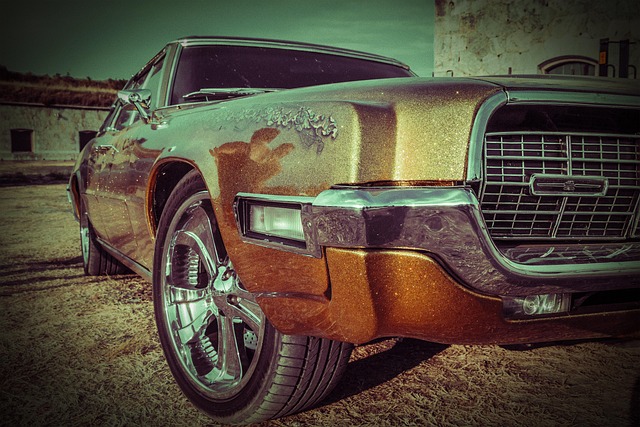The California DMV mandates a rigorous VIN verification process for all vehicles to ensure road safety and regulatory compliance. This involves cross-referencing VINs against state records and national databases to verify details like make, model, year, and historical issues. Individuals and professionals must understand these requirements, as proper documentation (registration, ID, insurance, purchase agreement) is crucial for a successful verification. The process aims to prove vehicle legitimacy, aiding registration, title transfers, and insurance claims. Common issues include data discrepancies, incorrect VINs, and modified vehicles; cross-referencing records and providing detailed maintenance documents help resolve these.
Navigating California’s VIN (Vehicle Identification Number) verification process is crucial for vehicle owners looking to register or title their cars. This comprehensive guide breaks down the essential steps, from understanding DMV requirements to gathering necessary documents and resolving common issues. By following these detailed instructions, you’ll ensure a smooth process, making it easier to get your vehicle registered with California’s Department of Motor Vehicles (DMV).
- Understanding DMV VIN Verification Requirements
- Gathering Necessary Documents for VIN Verification
- The Step-by-Step Process of California VIN Verification
- Common Issues and How to Resolve Them During VIN Verification
Understanding DMV VIN Verification Requirements

The California Department of Motor Vehicles (DMV) requires a thorough VIN (Vehicle Identification Number) verification process for all vehicles, both new and used, to ensure road safety and compliance with regulations. This procedure is mandatory for several reasons, including verifying vehicle history, detecting potential fraud, and ensuring the vehicle meets all necessary standards before it can be legally operated on California roads.
DMV vin verification involves cross-referencing the provided VIN with state records and national databases. These checks include confirming the vehicle’s make, model, year, and identifying any reported issues or accidents associated with that specific VIN. Understanding these requirements is crucial for both individuals selling or buying vehicles and professionals in the automotive industry to avoid legal complications and ensure a seamless transaction process.
Gathering Necessary Documents for VIN Verification

When preparing for a DMV VIN (Vehicle Identification Number) verification, having the right documents is essential. The process requires an array of paperwork to establish the vehicle’s authenticity and ownership history. Firstly, gather the vehicle’s registration documents, which include the original registration certificate and any recent renewals. These papers are crucial as they verify both the car’s current status and its legal ownership. Additionally, you’ll need a valid driver’s license or state-issued ID card to prove your identity during the verification process at the DMV.
Furthermore, insurance documents play a significant role. Provide proof of current auto insurance coverage with details such as policy number, effective dates, and the insurance company’s name and contact information. This step ensures that you meet California’s minimum insurance requirements. Other essential documents may include the purchase agreement or bill of sale, especially if you’re the second owner, to demonstrate the vehicle’s legal transfer.
The Step-by-Step Process of California VIN Verification

The process of California VIN (Vehicle Identification Number) verification is a straightforward procedure designed to ensure vehicle authenticity and compliance with state regulations. It begins with gathering essential documents, including the vehicle’s registration, proof of insurance, and the owner’s identification. Next, the individual or designated professional visits a DMV (Department of Motor Vehicles) office with these documents. There, an inspector will physically examine the vehicle, comparing its VIN to the information in their records. This step is crucial for matching the VIN with the appropriate make, model, and year, ensuring the vehicle’s identity and history are accurately verified.
Upon successful inspection, the DMV will issue a clearance or certification, indicating that the VIN verification has been completed successfully. This document is a testament to the vehicle’s legitimacy and can facilitate various processes like registration renewal, title transfer, or insurance claims. It’s important to note that accurate record-keeping during this process is vital, as it contributes to California’s overall efforts to maintain a secure and transparent automotive ecosystem, simplifying transactions for all parties involved.
Common Issues and How to Resolve Them During VIN Verification

During the DMV vin verification process, common issues can arise due to various reasons such as data discrepancies, documentation errors, or vehicle history concerns. One of the most frequent problems is incorrect or outdated information on the Vehicle Identification Number (VIN) record. This can be resolved by cross-referencing data from multiple sources, including the manufacturer, individual state databases, and national reporting agencies. Double-checking all available records ensures accuracy and helps avoid unnecessary delays.
Another common issue involves vehicles with modified or altered VINs. Such cases require additional documentation and inspection to verify the vehicle’s authenticity. It’s crucial to have detailed maintenance records, repair invoices, and, if applicable, before-and-after photos of any modifications. This information should be provided to the DMV during the verification process to demonstrate that the changes do not impact safety or identification integrity.
Navigating California’s DMV VIN verification process involves understanding clear requirements, gathering essential documents, and adhering to a structured procedure. By mastering these steps and anticipating potential issues, you can ensure a smooth experience. Remember, proper vehicle history documentation is key to compliance, enhancing safety, and facilitating efficient transactions in the vibrant California automotive market. For a seamless journey, always refer to official DMV guidelines when undertaking any VIN verification process.



